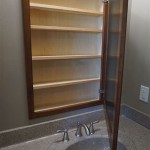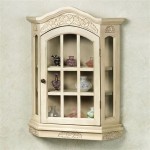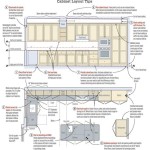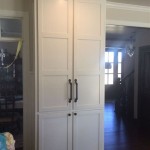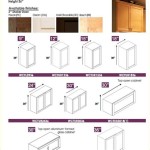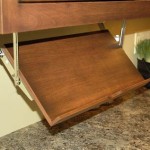The Perfect Tool Chest Side Cabinet For Enhanced Craftsmanship
A well-organized workspace is paramount for efficient and successful craftsmanship. A cluttered and disorganized area can lead to wasted time searching for tools, increased frustration, and potentially compromised quality of work. The tool chest side cabinet emerges as a strategic solution, offering expanded storage and improved accessibility for essential tools and materials. Choosing the right side cabinet requires careful consideration of several factors, ensuring it complements existing storage solutions and meets the specific needs of the craftsman.
This article explores the crucial aspects of selecting the ideal tool chest side cabinet, detailing the key features, materials, and considerations that contribute to optimizing the workspace and enhancing overall craftsmanship. Focus will be placed on how a well-chosen side cabinet can improve organization, accessibility, and workflow, thereby allowing the craftsman to concentrate on the intricacies of their work.
Understanding the Importance of Organization and Accessibility
Effective organization is more than just tidiness; it's about creating a system that promotes efficiency and reduces wasted time. A disorganized workspace forces the craftsman to spend valuable minutes (or even hours) searching for the right tool or material. This disrupts the flow of work, leads to frustration, and can ultimately impact the quality of the finished product. Conversely, a well-organized space allows for immediate access to necessary items, fostering a smooth and uninterrupted workflow.
Accessibility is directly linked to organization. Even the most extensive storage system is ineffective if accessing tools and materials is cumbersome. A carefully considered layout, incorporating features like drawers of varying sizes and strategically placed compartments, ensures that every tool is readily available when needed. The tool chest side cabinet, designed to augment existing tool storage, plays a significant role in enhancing both the organization and accessibility of the workspace.
The ability to quickly locate and retrieve tools not only saves time but also minimizes the risk of damage to both tools and projects. When tools are properly stored and easily accessible, they are less likely to be misplaced, dropped, or subjected to unnecessary wear and tear. This contributes to the longevity of the tools and minimizes the possibility of costly replacements. Moreover, enhanced accessibility allows the craftsman to maintain focus on the task at hand, leading to improved accuracy and a higher quality of workmanship.
Key Features and Considerations When Selecting a Side Cabinet
Choosing the right tool chest side cabinet involves a careful assessment of its features and how they align with the craftsman's specific needs. Several factors should be considered, including the size and capacity of the cabinet, the materials used in its construction, the types of drawers and compartments it offers, and the overall durability and security it provides.
Size and Capacity: The dimensions of the side cabinet should be carefully considered in relation to the available workspace and the amount of storage required. A cabinet that is too large may occupy valuable floor space and hinder movement, while a cabinet that is too small may not provide sufficient storage capacity. The ideal size will depend on the quantity and size of tools and materials to be stored, as well as the overall layout of the workshop.
Materials: The materials used in the construction of the side cabinet directly impact its durability and longevity. Steel is a common choice for its strength and resistance to wear and tear. However, the gauge of the steel is critical; thicker steel provides greater rigidity and weight capacity. Other materials, such as aluminum or reinforced polymers, may also be used, offering a balance of strength, weight, and corrosion resistance. The choice of material should be based on the intended use of the cabinet and the environment in which it will be located.
Drawers and Compartments: The types and configurations of drawers and compartments are crucial for effective organization. Drawers of varying depths and widths allow for the storage of different sized tools and materials. Ball-bearing slides ensure smooth and effortless drawer operation, even when fully loaded. Compartments with adjustable dividers provide flexibility in organizing smaller items. The layout of the drawers and compartments should be carefully considered to optimize space utilization and accessibility.
Durability and Security: A tool chest side cabinet should be built to withstand the rigors of a workshop environment. Reinforced corners, heavy-duty hinges, and robust locking mechanisms contribute to the overall durability and security of the cabinet. A secure locking system is essential for protecting valuable tools and preventing unauthorized access. The cabinet should also be designed to resist tipping or overturning, ensuring the safety of the user and the surrounding environment.
Beyond these core features, additional considerations may include the presence of features like a power strip for charging tools or accessories, a work surface on top of the cabinet for convenient access, and casters for easy mobility. The ideal side cabinet will be the one that best addresses the individual needs and preferences of the craftsman.
Maximizing Workflow and Efficiency with an Optimized Setup
The true value of a tool chest side cabinet lies in its ability to enhance workflow and improve overall efficiency. By providing readily accessible storage for tools and materials, the side cabinet minimizes downtime and allows the craftsman to focus on the creative and technical aspects of their work. A carefully planned setup can transform a cluttered and unproductive workshop into a streamlined and efficient workspace.
Strategic Placement: The placement of the side cabinet within the workshop is crucial for maximizing its effectiveness. It should be located within easy reach of the primary work area, minimizing the need to walk back and forth to retrieve tools or materials. The cabinet should also be positioned in a way that does not obstruct movement or create bottlenecks in the workflow. Careful consideration should be given to the layout of the workshop and the specific tasks that are performed most frequently.
Ergonomic Considerations: The height of the side cabinet should be ergonomically appropriate for the user, minimizing the need to bend or reach excessively. This reduces strain on the back and joints, preventing fatigue and potential injuries. The drawer configurations should also be designed to facilitate easy access to tools without requiring awkward movements or excessive force.
Customization and Personalization: While the side cabinet provides a foundation for organization, it is important to customize and personalize the setup to meet individual needs and preferences. This may involve adding tool organizers, drawer liners, or other accessories to optimize space utilization and improve accessibility. Labeling drawers and compartments can also help to quickly identify the contents and further streamline the workflow. The side cabinet should be treated as a flexible and adaptable storage solution that evolves along with the craftsman's changing needs.
Investing in a high-quality tool chest side cabinet is an investment in the craftsman's efficiency, productivity, and overall enjoyment of their craft. By carefully considering the key features, materials, and considerations outlined above, the craftsman can select a side cabinet that perfectly complements their existing storage solutions and transforms their workspace into a highly organized and efficient environment.
A well-chosen and thoughtfully organized tool chest side cabinet contributes significantly to the overall quality of craftsmanship. By minimizing wasted time, reducing frustration, and promoting a smooth and uninterrupted workflow, the side cabinet allows the craftsman to focus on the precision and artistry of their work. This, in turn, leads to improved accuracy, higher quality results, and a greater sense of satisfaction in the finished product.
Ultimately, the perfect tool chest side cabinet is one that seamlessly integrates into the craftsman's workflow, providing readily accessible storage and promoting a highly organized and efficient workspace. It is an essential tool for any serious craftsman who values productivity, quality, and the overall enjoyment of their craft.

Storage Cabinets And Chests Frequently Asked Questions Craftsman

There S A Woodworking Storage Surprise In This Tool Chest

Craftsman Launches V Series Pro Tool Storage

10 Best Auto Mechanic Tool Boxes For 2025 The Family Handyman

New Craftsman Fully Featured 41 Tool Storage Chest And Rolling Cabinet

Maxim Side Cabinets Accessories Just Pro Tools

7 Ways To Organize Your Tools

Best Garage Toolboxes For 2025 Tested

Craftsman Storage Sedalia Missouri Chest Woodworker S Journal

Side Cabinet Number Of Drawers 6 Grainger
Related Posts

